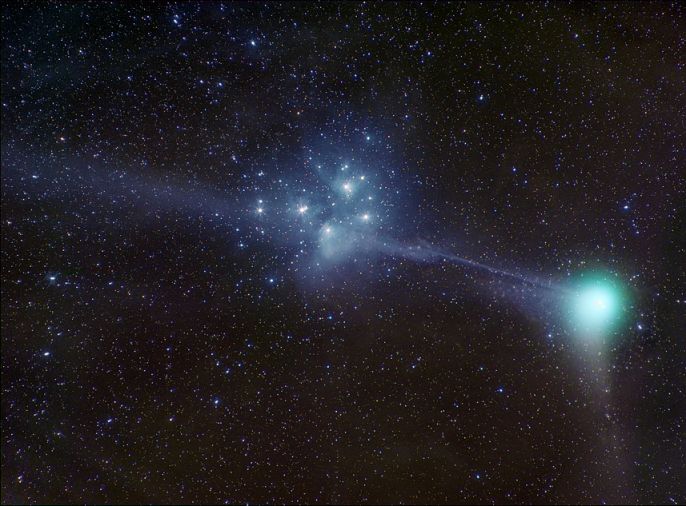Ooh, fun topic... the Sun's color that is.

There are a number of things stated in this thread that may deserve a little more attention. I did not read every post carefully, so I am probably restating some things.
The Sun has a number of colors, so one must clarify whether its true color (as seen in space and at a proper attenuation level) or associate color, if placed next to another star, or its color seen when sunlight passes through a fixed amount of atmosphere, including dust and other particles.
The true color of the Sun is.... white.
For some fun with this and a fair amount of information....[the last is the best]
http://www.scientificblogging.com/solar ... of_the_sun
http://www.scientificblogging.com/solar ... un_part_ii
http://www.scientificblogging.com/solar ... revelation
A solid demonstration of this can be seen by simply doing a solar projection of a mid-day sun. You don't even need a telsecope, just a pinhole in a plate or paper allowing sunlight upon a white colored sheet of paper or whatever. But a bigger job of this was done a few years ago...
The last link above has an image taken by Dr. Potter of the Solar projection as it is seen at the McMath-Pierce telescope at Kitt Peak. [It's the world's largest.] He and a technician, Roy Lorenz, provided this for me and they were kind enough to add red, green and blue reference objects to help color calibrate the image, not that it needed calibration, but it is clearly not a b&w image. The telescope does not use any filters, so color alteration is not an issue.
Their image reveals no hint of yellow or any other single color found in the sunlight. Yet we do have to add whatever colors that were taken out (extinctions)by our atmosphere back into this white projection. But, as has been stated before, these colors are predominatly blue, but only a little bit is lost to the atmosphere. So what does our little math viewpoint give us? If we add these "blue" photons (mainly) to a white object what color, and only a little bit of blue, will we get a yellow star? Nope! Can we get a blue star? Well, that's highly unlikely.
It's really that simple, though other methods, if accurate, will give you the same result.
As for the Sun's peak energy wavelength, it is commonly misstated. It is not yellow or green or yellow-green, at least as seen from space (AM0). The peak wavelength can be found in the blue portion of the spectrum. I have seen the peak vary from about 450nm (almost violet) to 480nm (almost cyan). These peaks are more like a plateau so it is not surprising to see a tiny change from time to time, I think. [You can find numerous spectral irradiance graphs on the web, but look for AM0 ones. At least one has already be given in this thread.]
Our eyes, however, are better modelled using photon flux rather than watts/unit area per unit wavelength. But photons require more energy for shorter and shorter wavelengths (E = hf), so we end-up with an entirely different energy (i.e. photon flux) distribution. Here the peak is.... brace yourself... yellow! Yikes!
Well, if a yellow photon flux was all there was from the sun, it would always look yellow (ignoring evolutionary issues), but all the other wavelengths must be taken into consideration. Also, the spectral sensitivity of our eyes must alos be considered. It gets very complicated, but we already know the answer for the simpler work, so why bother.

Some simply argue that the Sun is white because it consists of all the colors, and white has all the colors. But this approach does not work since red giants and blue stars also have all the colors, too. Stars are close to being blackbody objects so, except for the chilly T-class stars, you will always find all the visible colors emitted.
One other issue, that applies to which star is the whitest, is the problem or advantage we have with color constancy. Our eyes & brains (retinex) take the brightest and whitest object seen as a color reference and converts everything else to help us maintain objects truer colors in the absence of sunlight. Look at your car's headlights in the daytime (preferably not the halogen ones) and then look at them at night. In the daytime, the Sun's direct sunlight color temperature is around 5800K, whereas your headlights have a color temperature closer to a wimpy 2000K. So the Sun is your retinex white color reference. But at night, your headlights are king and they will appear whiter than they do in the daytime.
So, if we see a star all by itself that is anywhere close to the temperature of the Sun, probably by several thousand degrees, we will see it as white due to color constancy. Red stars will appear orange partly for this reason, but more for the fact, as mentioned above, that the other colors are also present (blue to orange), which shifts a strong red end toward the blue. Some observers have told me that certain "red" stars do appear red to them, so now we can talk about the subjective issues of color vision. Or perhaps not...









